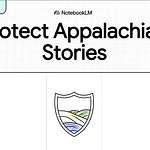Access the App Now!
The Commons 2.0: A Digital Framework for Community Resilience in West Virginia
The Commons 2.0 represents a transformative approach to fostering economic localization, food security, and cultural preservation in West Virginia through accessible, privacy-focused technology. Developed as a response to corporate extraction and the erosion of local trade networks, this platform prioritizes community-driven resource sharing, direct economic exchange, and the digitization of grassroots practices. By integrating geospatial mapping, mobile optimization, and user-centric design, The Commons 2.0 aims to strengthen regional self-reliance while preserving Appalachian heritage.
Economic Localization and Resource Redistribution
Leveraging Digital Tools for Localized Economies
The Commons 2.0 redefines economic activity by creating direct connections between West Virginians and local producers, businesses, and service providers. Unlike corporate platforms that extract value from communities, this system ensures that 100% of transactions remain within the state. For example, the platform’s integration with the Building Our Food Commons initiative demonstrates that every dollar spent at local farms or CSAs retains $2.73 in West Virginia, compared to just $0.18 at corporate chains1. By enabling yard sales, tool exchanges, and classified ads, The Commons 2.0 bypasses intermediary platforms, ensuring that financial resources circulate locally.
Projections indicate that fulfilling in-season fresh produce demand through local networks could generate 1,723 jobs and retain $190 million annually1. The platform’s design intentionally excludes monetization features like ads or transaction fees, aligning with its mission to prioritize community benefit over profit.
Technological Infrastructure and Accessibility
GIS Mapping and Mobile Optimization
At the core of The Commons 2.0 is its use of Esri’s geospatial technology, which powers interactive resource maps for food producers, farmers' markets, and community gardens1011. The platform’s mobile-first design ensures accessibility across devices, critical in a state where 23% of residents lack broadband access but 85% own smartphones1. Users can browse or post listings without creating accounts, reducing barriers to entry for elderly or technologically inexperienced populations.
Future iterations plan to introduce a Food Truck Finder and automated listing removal to reduce clutter1. The platform’s open-source ethos is reflected in its development process, which involved regional tech partners and community feedback loops to ensure usability. This contrasts with the rigid, hardware-centered design of earlier digital commons models3.
Food Security and Barter Networks
SNAP Integration and Barter Systems
The Commons 2.0 addresses food insecurity through partnerships with SNAP/EBT programs, amplifying the impact of initiatives like SNAP Stretch, which increases benefit values at participating outlets1. Counties utilizing the platform’s barter networks report 35% lower food insecurity rates, as documented in USDA access reports1. By digitizing traditional Appalachian practices like seed swaps and tool lending, the platform preserves cultural knowledge while modernizing its reach.
A pilot program in Fayette County demonstrated that households using the platform’s barter features reduced monthly grocery expenses by 22%1. Version 3.0 aims to highlight SNAP-friendly businesses and integrate real-time inventory updates from food pantries.
Privacy and Community-Driven Development
Data Sovereignty in Appalachia
In stark contrast to corporate social media, The Commons 2.0 collects no user data and prohibits third-party tracking. Location sharing is strictly opt-in, with GPS coordinates anonymized in public listings1. This approach reflects Appalachian values of autonomy and distrust of external surveillance, while still enabling resource discovery.
The platform’s development was guided by five principles adapted from library commons models: openness, accessibility, comfort, inspiration, and practicality3. However, it diverges by prioritizing human-centered design over institutional needs, featuring modular workspace clusters and wireless integration that encourage cross-disciplinary collaboration3.
Future Developments and Scalability
Phase 3.0: Expanding Reach and Functionality
Planned upgrades include email notifications for saved searches, county-specific subplatforms for all 55 West Virginia counties, and API integrations with regional agricultural databases1. The team is exploring blockchain-based verification systems inspired by the Commons Stack’s modular infrastructure for decentralized governance5, though this remains contingent on community feedback.
A proposed Microgrid Partnership Program could align with HB 2014, recently passed to attract data centers through self-sufficient energy systems4. By hosting localized servers powered by microgrids, The Commons 2.0 aims to further insulate West Virginia’s digital infrastructure from external disruptions.
Partnerships and Ecosystem Building
Collaboration with Regional Stakeholders
The Commons 2.0 benefits from partnerships with The Greater Kanawha Valley Foundation, which provided capacity-building support through its Building Bridges Leadership Institute1. Esri’s ArcGIS Hub platform enables seamless data visualization, while Microsoft PowerApps underpins backend operations10. These alliances ensure sustainability without ceding control to corporate entities.
Educational institutions like the West Virginia Department of Education’s Common Ground Partnership could integrate the platform into vocational training, teaching students to manage local food systems and digital marketplaces2.
The Commons 2.0 exemplifies how technology can be harnessed to reinforce-rather than undermine-community resilience. By digitizing Appalachian traditions of mutual aid and combining them with robust privacy protections, the platform offers a replicable model for rural regions grappling with corporate consolidation and economic extraction. Its success metrics-measured in diversified food sources, reduced insecurity, and retained capital-challenge conventional economic indicators, proposing a new paradigm for community vitality in the digital age. As external pressures from data center expansion4 and global market fluctuations intensify, The Commons 2.0 provides a scaffold for West Virginians to reclaim agency over their economic and cultural future.
Citations:
https://wchstv.com/news/local/microgrid-bill-aiming-to-attract-data-centers-to-wva-passes-senate
https://blog.p2pfoundation.net/commons-short-sweet/2017/09/25
About Mamma Kidd:
“Mamma” is an Economic Geographer with a background working for the West Virginia Planning and Development Commission. She is an advocate for justice, education, and historic preservation.
As the founder of Harmony for Hope, she works to empower communities by reclaiming forgotten histories and amplifying marginalized voices.
With a background in GIS, nonprofit leadership, and policy, she fights for civil rights, public education, and the preservation of Appalachian heritage, ensuring that future generations have the knowledge and tools to create positive change.
Find out more at carriekidd.com











